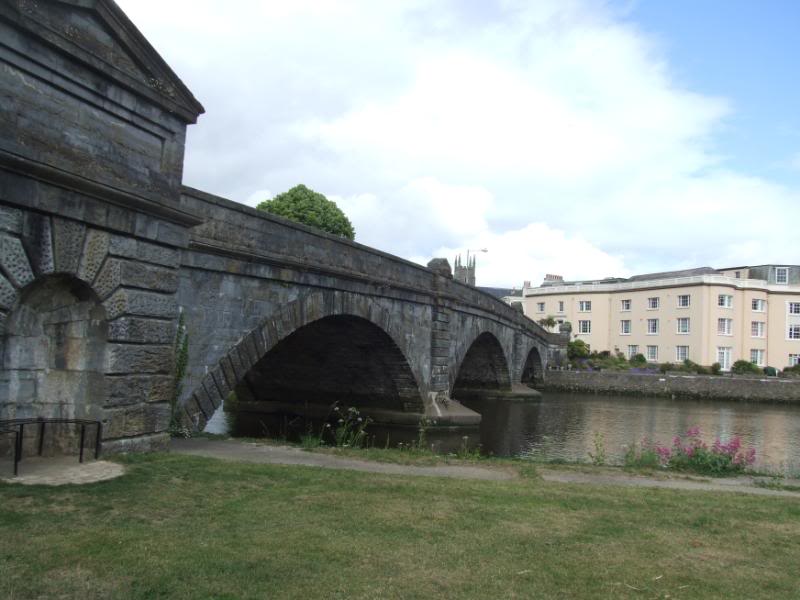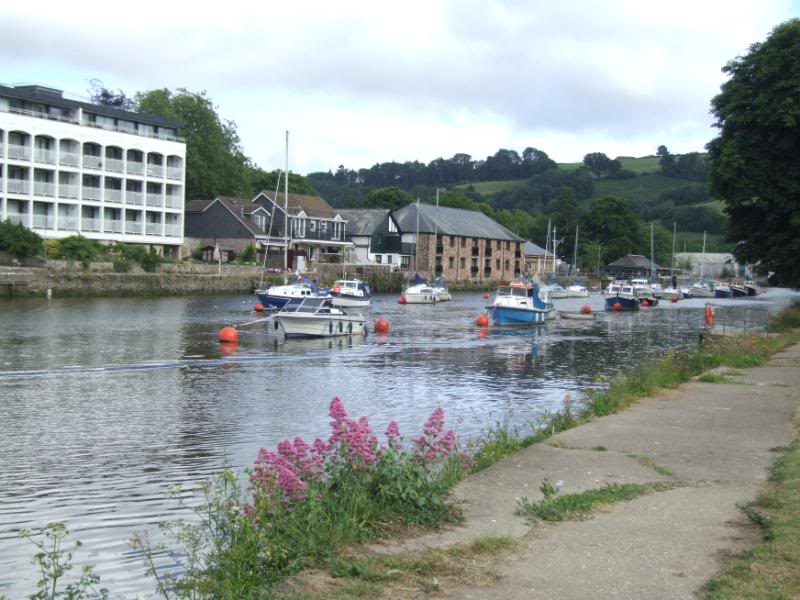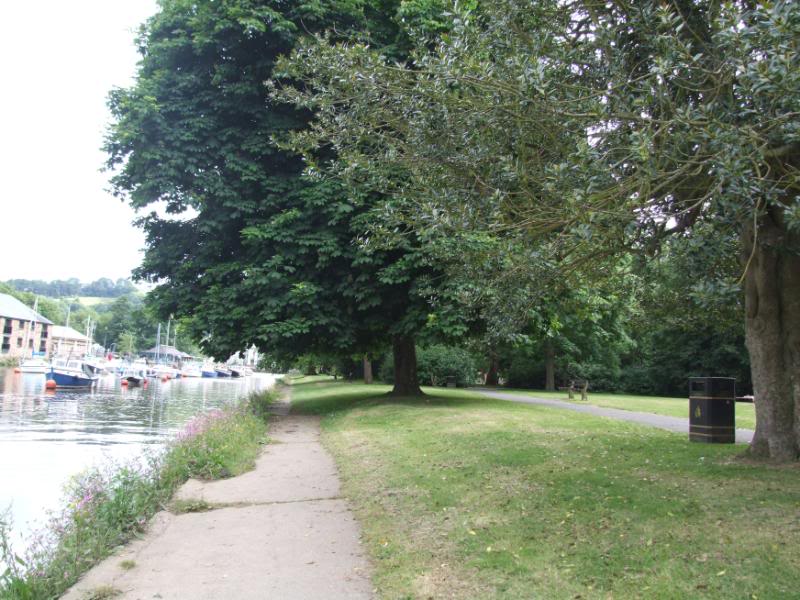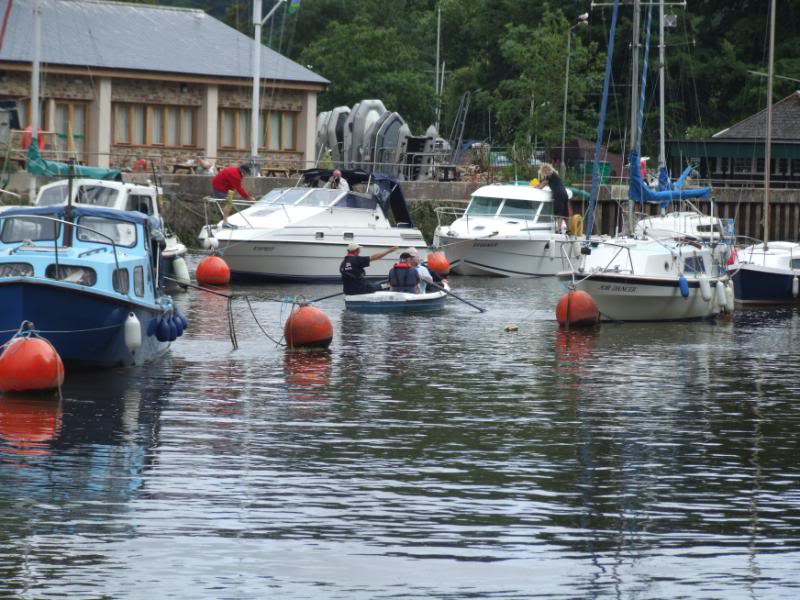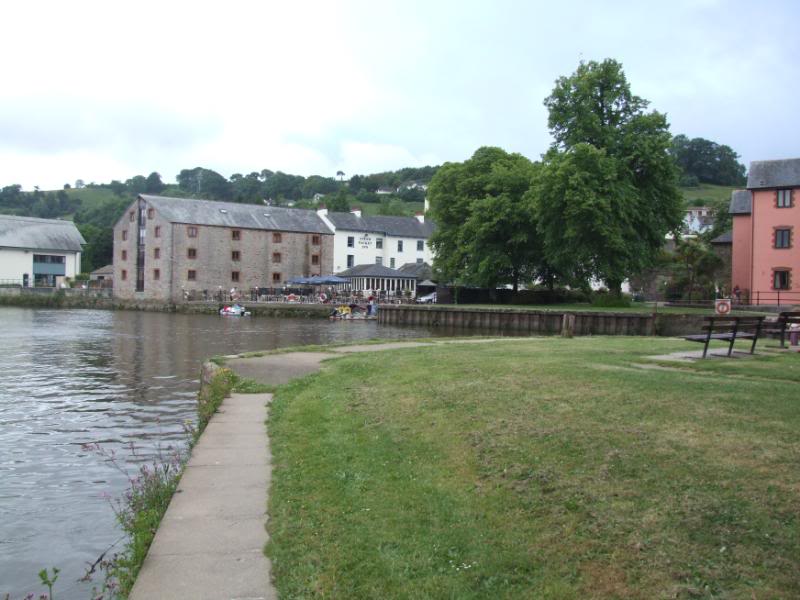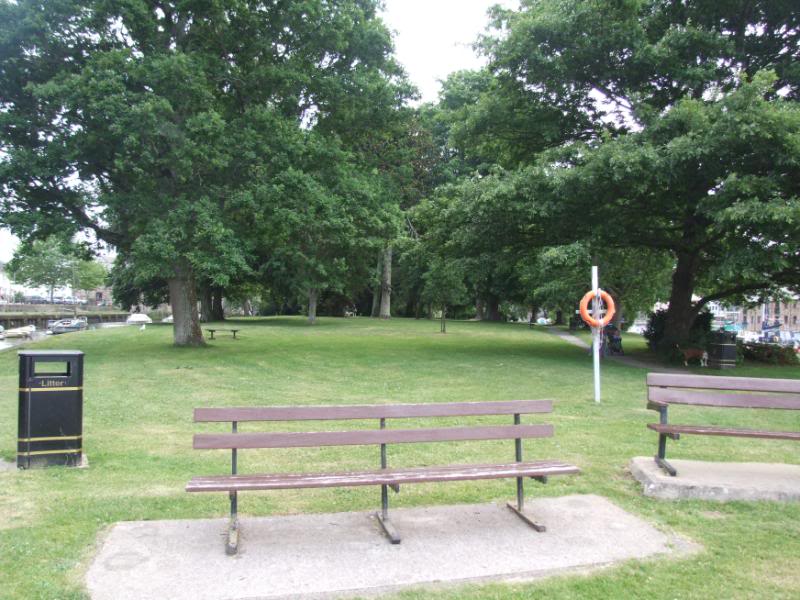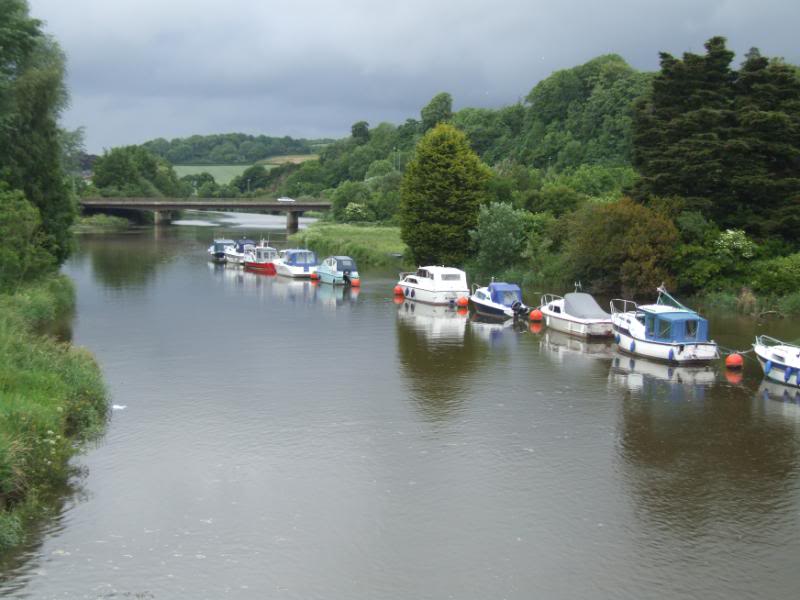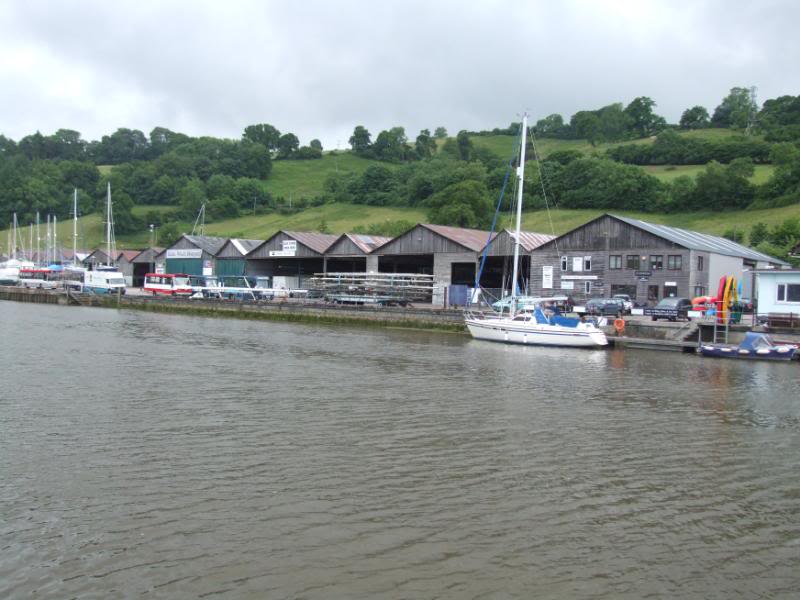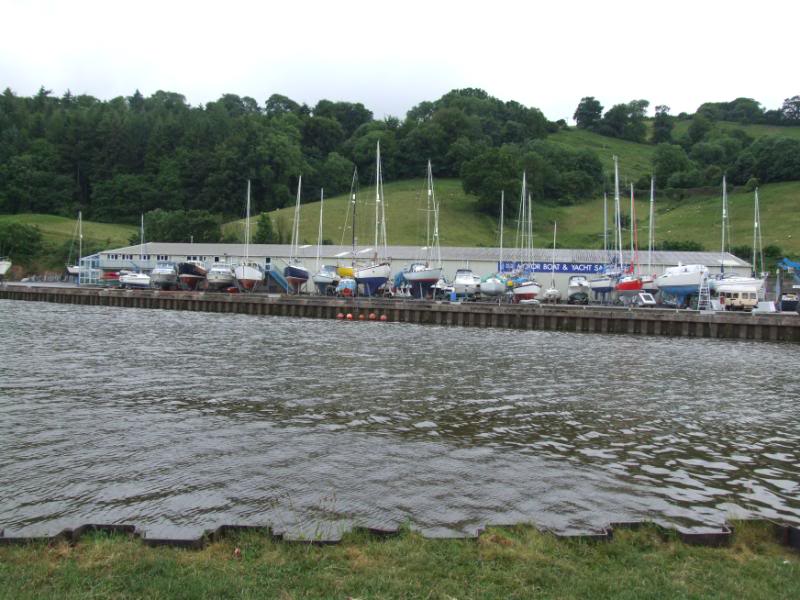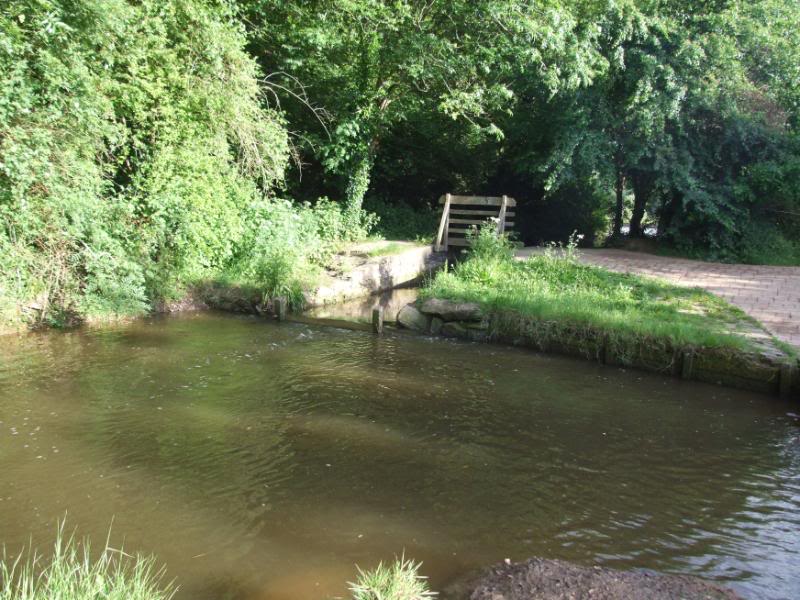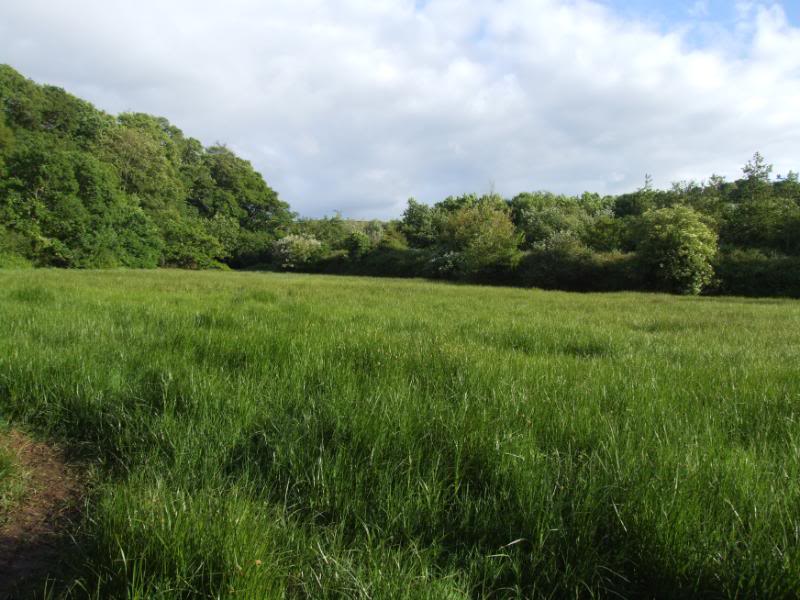Post by Dave on Sept 13, 2010 18:15:55 GMT
Longmarsh Totnes 13th June 2010
Just got back home after a very delightful later afternoon early evening walk with Carol. It’s strange I was really looking forward to the world cup but I have only watched the first two opening games and the England game yesterday. To be honest I think it’s the terrible noise that sounds like a swarm of demented bees that drove me mad and has killed off much of my interest in these group games, maybe as the competition progresses I will want to get back into watching the games again.
Anyway Devon has so many beautiful places to go and spend some quality time in and today we found a gem that we are not sure how long has been open as a public walkway. Carols Sunday to work so I picked her up at 2.45pm and got her home and chucked her in the bath for a scrub.
Our plan due to the time was just to go to Totnes and get a takeaway and sit on Vire Island (Vire Island is not really an Island as such as it’s only surrounded by water on three sides of it) to eat it and then go over the bridge and just walk down Steamer Quay.. It was when we got to the end of Steamer Quay we discovered the path that takes you on a nice flat walk along the river Dart known as Longmarsh. It must be 15 or more years since we last walked around Steamer Quay and I’m sure if this path was there then we would have walked it.
I have checked on the internet and can’t find out very much about this path, maybe someone else on here will know just how long the path was created or open for the public to walk on.
I do know that Longmarsh was once managed as a saltmarsh and was periodically flooded to keep the vegetation lush. Much of the area has since been infilled and is now managed to benefit wildlife.
What is also interesting is that from 1860 until the end of the Second World War longmarsh was also used as a rifle range by the Totnes Rifle Volunteers (1860 to 1908) then by the Territorial Army and by the regular allied troops during the war.The volunteer movement began in 1794 in response to the threat of invasion by Napoleon and in their heyday the Rifle Volunteers were a very active force in Totnes.
Looking across the river you see Baltic Wharf and what was until 1995 the building used by a company known as Reeves Timber. Eighty years ago the old wharf was actually helping to drive a massive housing boom in Paignton.A bustling, money-making, job-providing stretch of quayside timber yards stretching from the downstream end of Baltic Wharf to The Plains, the wharves were providing the wood that went into the thousands of homes that were springing up around Paignton, Preston and Torquay. Most of the roof joists in the homes built across the area during that period were made in the Reeves timber yards at Totnes.
It was Francis John Reeves known as FJ, the Totnes-born carpenter and architect who started the F J Reeves company after suffering a bout of bronchitis and being advised by his doctor to head home to Totnes for the Devon air.It started off as coal and 'heavyside' builders merchants in 1891 but by 1895 the company was importing timber through Plymouth and hauling it up to Totnes by train. By 1900 the timber was being imported from Sweden directly up the Dart to Totnes.
As the business grew so the riverside operation expanded, which included buying the old Totnes riverside rubbish dump from the town council in the 1936.During the Second World War the timber yards were fitting out minesweepers built in Totnes shipyards. Later in the war they were putting together landing barges which were shipped in in kit form.
During the post-war building boom and the 1960s the company prospered and timber ships were a regular sight on the Dart heading for Totnes.For most of the 20th century Reeves was one of the biggest employers in the town.By the early 70’s when the company was taken over to become Graham Reeves, part of the biggest builders merchants in Europe, the yards employed 240 people.
But decline was on the way as the larger and more economical timber ships could no longer make it up the Dart and the advent of roll-on roll-off ferries made it simple to truck already cut timber into the country direct to where it was wanted.The occasional timber ship still turned up right up until the early 90s but the workforce was being wound down and in 1995 Reeves announced the yard was to close. By now there were just 40 people working there.
There is another well known building right on the end of Baltic Wharf and it became famous as it was the building Pete Goss ( Team Phillips) built his 120ft long catamaran that he planned to break the record sailing around the world in I went to see this boat being built and It was really unbelievable just how big it was and I suppose it was no real surprise it broke up and was lost at sea in storms in December 2000 in the North Atlantic
I would guess the walk along the Longmarsh path to the very end is about half a mile or so, at the end are two benches and the view is wonderful and you can also see the remains of the buts set up in 1860 by the Totnes riflemen.
Don’t walk back the way you came, instead take the path you will see on your left as it takes you in to the heart of the wetlands the only advise I will give you is wear a pair of waterproof shoes.
As we got back to go over the bridge over the river Dart we were surprised to see just how high the tide was, the path we had walked on an hour or two before on Vire Island was under water.

